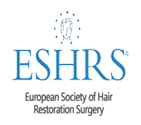- Mon-Sat | 8:00-18:00 Sunday (closed)
- Email : info@harleybodyclinic.co.uk
- Call : 02071679386
Blepharoplasty (BLEF-uh-roe-plas-tee) is a surgery that corrects droopy eyelids and should involve removing excess skin, muscle and fat. As any age, your eyelids stretch, and therefore the muscles supporting them weaken. As a result, excess fat may gather above and below your eyelids, causing sagging eyebrows, droopy upper lids and bags under your eyes.
Besides making you look older, severely sagging skin around your eyes can reduce your side vision (peripheral vision), especially the upper and outer parts of your field of vision. Blepharoplasty can reduce or eliminate these vision problems and make your eyes appear younger and more alert.
To help decide if blepharoplasty is true for you, determine what you’ll realistically expect and explore the advantages and risks of blepharoplasty. For individuals considering eyelid surgery in Harley Body Clinic Please Contact Us.

You might consider blepharoplasty if droopy or sagging eyelids keep your eyes from opening completely or pull down your lower eyelids. Removing excess tissue from your upper eyelids can improve your vision. Upper and lower lid blepharoplasty can make your eyes appear younger and more alert.
Blepharoplasty could also be an option if you have:
One may undergo blepharoplasty at an equivalent time as another procedure, like a brow lift, face-lift or skin resurfacing.
Possible risks of eyelid surgery include:
Talking to your doctor about how surgical risks apply to you. Understanding what’s involved in blepharoplasty and weighing the advantages and risks can assist you decide if this procedure may be a good option.
Before scheduling blepharoplasty, you’ll meet with a cosmetic surgeon and an eye fixed specialist (ophthalmologist) or a cosmetic surgeon who focuses on eye surgeries (oculoplastic surgeon) to discuss:
Your medical record – Your surgeon will ask questions on previous surgeries and past or current conditions, like dry eyes, glaucoma, allergies, circulatory problems, thyroid problems and diabetes. Your doctor also will ask about your use of medicines, vitamins, herbal supplements, alcohol, tobacco and medicines.
Your expectations – An honest discussion of your hopes and motivation for surgery will help set the stage for a satisfactory outcome. Your surgeon will ask you whether the procedure is probably going to figure well for you.
Arrange for somebody to drive you to and from surgery if you’re having outpatient surgery. Decide to have someone stick with you for the primary night after returning home from surgery.
Blepharoplasty is typically wiped out an outpatient setting. Your surgeon injects numbing medication into your eyelids and administers intravenous medication to assist you relax.
If you’ve got surgery on your upper and lower eyelids, the surgeon generally works on your upper lids first. He or she cuts along the fold of the eyelid, removes some excess skin, muscle and possibly fat, and closes the cut.
On the lower lid, the surgeon makes a cut slightly below the lashes in your eye’s natural crease or inside the lower lid. He or she removes or redistributes excess fat, muscle and sagging skin, and closes the cut.
If you’re upper eyelid droops on the brink of your pupil, your surgeon may do blepharoplasty with a procedure called ptosis (TOE-sis) that gives additional support to the eyebrow muscle.
After surgery you spend time during a hospital room, where you’re monitored for complications. You’ll leave later that day to recuperate reception.
Many people express satisfaction with the results of blepharoplasty, like a more rested and youthful appearance and more self-confidence. For a few people, results of surgery may last a lifetime. For others, droopy eyelids may recur.
Bruising and swelling generally subside in 10 to 14 days, which can be once you feel comfortable going call at public again. Scars from the surgical cuts may take months to fade. Guard your delicate eyelid skin from an excessive amount of sun exposure.
Disclaimer – Result can vary from person to person

” My trip to Harley Body Clinic or my eyelid surgery was just amazing. I didn’t get any form of eyestrains. I look way more relaxed with no look of angry. I am enjoying life again. .”

” I am happy with my decision for my eyelid surgery with Harley Body Clinic. It is just a happy, positive place with ideal and more professional surgeons for providing best results. ”

“I am impressed with Harley Body Clinic surgeon’s advice and professionalism for my eyelid surgery. They took utmost care of my desires for my eyelid surgery.”

“I am thrilled by the outcome for my eyelid surgery with Harley Body Clinic. ”

“It great experience for getting my surgery for my eyelid done with Harley Body Clinic. Highly recommendable. ”

“I again look younger, feel young and look even brighter. Thank you Harley Body Clinic for such amazing contour to my eyelid. ”
Eyelid surgery is most often performed to correct the effects of aging in the upper and lower eyelids. But it can also offer benefits to younger men and women, as well. Many individuals begin to see changes in their eyelids as early as their mid-30s, and even patients in their 20s may have undergone eyelid surgery to enhance their appearance.
Good candidates for eyelid surgery may also include healthy men and women with any of the following conditions:
Though eyelid surgery offers great benefits to many seek it, the procedure should to be approached with extra caution for those with any of the following medical conditions:
If you have any of these medical conditions, be sure to alert Harley Body Clinic during consultation.
During your consultation, Harley Body Clinic Professionals will assess your overall eyelid contour, the amount of excess eyelid fat and skin you possess, your eyebrow position, and the condition of the muscles in the area.
For a more complete rejuvenation, Harley Body Clinic Professionals may discuss additional procedures that can be performed along with eyelid surgery For men and women frequently combine eyelid surgery with:
The blepharoplasty technique, Harley Body Clinic uses for you depends upon your individual features and aesthetic goals. Harley Body Clinic Professionals will discuss your options with you during your pre-op consultation.
Upper eyelid surgery: This procedure helps to remove excess skin and fatty tissue from the upper eyelid. It is performed using incisions hidden in the natural contour of the eyelid. Each incision typically begins within the inside corner of the eye and runs just beyond the outside corner. It is through these incisions that dissection and fat removal are performed.
Lower eyelid surgery: This procedure is typically performed using incisions concealed just below the lower lash-line Excess skin, fat and muscle are removed to improve the eye’s appearance, it may also choose to tighten underlying muscle and redistribute fat beneath the eye to reduce the look of puffiness.
Transconjunctival blepharoplasty: This lower eyelid procedure removes unwanted fat from the area, using an internal incision, placed inside the lower eyelid. This option offers the advantage of no external incisions, although it is seldom advised since most patients require some skin excision as well which obviously requires an external incision.
Because cosmetic eyelid surgery cannot address wrinkles and crows feet, it is often combined with treatments such as laser resurfacing or chemical peel for a complete rejuvenation.

Though thousands of men and women undergo eyelid surgery each year and may experience no major complications, the procedure does carry some degree risk. It is important you be well informed of these risks when considering an eyelid surgery. A Harley Body Clinic professional sees the discussion of potential risks and complications as one of the most important aspects of patient consultation. During your consultation, he will discuss these potential complications with you, listen to your safety questions, and offer instructions on how to minimize your risk.
It is important to follow Harley Body Clinic instructions when preparing for forehead lift surgery to ensure the best possible results.
Those instructions may include:
During surgery, medications will be administered to ensure comfort General anesthesia will most likely be used to allow you to sleep during the procedure Harley Body Clinic uses only doctors (anesthesiologists)-not nurses (CRNA’s or anesthetists)-to administer anesthesia Harley Body Clinic Surgery patients We will carefully monitor your physical status throughout the operation and during your recovery.

Harley Body Clinic uses advanced techniques to foster faster recovery for all our patients Directly after surgery, you’ll be taken to a recovery area and carefully monitored.
Temporary blurring of vision is common during this time due to ointment used to protect and lubricate the eyes Tightness around the eyes should also be expected, but should diminish when the swelling subsides Though pain after surgery is generally minimal, it can be controlled with pain medication Bruising and swelling should also be expected and minimized using cold compresses The amount of swelling and bruising and the length of time it will last will vary from patient to patient.
Though everyone heals at a different pace varying from each person to person, you can expect your recovery to roughly follow this general time line:
Most people who undergo eyelid surgery are very pleased with their results fairly soon after their procedure. Many report looking refreshed and more alert after their eyes have had a chance go heal. Most traces of surgery will subside after several weeks. After surgery, the skin around your eyes must be carefully protected from the sun and wind Sunblock and darkly tinted sunglasses will be needed.
Though, the results of blepharoplasty are long lasting, no surgical procedure will stop the aging process, our surgeon can advise you on how best to maintain your refreshed look.
Harley Body Clinic believes in the importance of follow-up visits, to answer any questions you may have and monitor your healing process. Rather than delegating all of these visits to a nurse, we enjoy seeing our patients as they heal over time. Your first post-operative visit will be scheduled after the initial healing period, during the first week after surgery. In the following months, Harley Body Clinic Doctors may ask you to return for periodic checkups. Keeping these appointments is important to allow him to assess your long-term results and address any questions or concerns you may have.
When considering undergoing upper or lower eyelid surgery, or any other type cosmetic surgery Harley Body Clinic believes choosing a qualified Doctor to perform it is one of the most important factors Though it’s hard to believe, not all physicians who perform cosmetic surgery have had formal surgical training It’s important to research the credentials of all doctors you consider for your procedure Harley Body Clinic is fully trained in Plastic and Reconstructive surgery as well as Otolaryngology (head and neck surgery) We invites potential patients to fully explore their training, experience online or during a personal consultation.
It is very important to find out if your surgeon has operating privileges in an accredited hospital for the procedure you are considering, even if you are planning to undergo surgery in your doctor’s office or at a surgery center. Before granting privileges, hospital review committees evaluate a surgeon’s training and competency for specific procedures.


